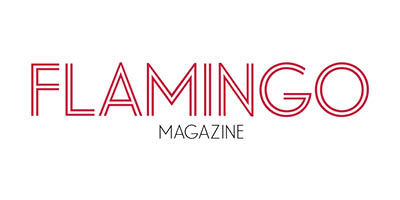When you’re trying to get a freelance assignment from a magazine, you know that you’re first step is to have a fantastic idea.
You gather the information you need to sell the idea, and then you write a winning pitch letter. But then you get stuck on the next move. You need to get your query into the hands of an editor—preferably the right editor—to read it and consider it for publication. It’s a critical stage in the process, and you don’t know how to make sure your pitch letters get read. It’s something that confounds even the best freelance writers.
Also on Mediabistro


But it doesn’t confound James Sturz, a veteran freelance writer and novelist. Sturz’s work has appeared in publications from The New York Times Magazine to Travel + Leisure to Marie Claire, and he shared some tips with us about how to communicate with an editor so you act and sound like a pro—even when you aren’t one, yet.
Once your pitch letter is ready, and you’ve chosen the magazine you want to target, how do you know who to send it to?
In the best possible world, you have chosen a specific publication for your story idea. Better still, you’ve identified a particular section or column that runs articles like the one you imagine doing. Each column or section is the responsibility of one or sometimes two editors. Write a proposal that squares nicely with that section or column and send it to the editor who handles it.
A lot of this information is more readily available than most people think. Try calling the receptionist in the editorial department, or any low-level editor—an “assistant editor” or “associate editor”—and asking who edits the section you want to pitch. But it may not even require a phone call.
In some cases you can find the right editor by reading the magazine’s masthead. If your idea relates to health, send it to a “health editor.” If you want to write a book review, contact the “book editor.” When you are looking to write a feature, pitch to someone with a title like “features editor,” “articles editor,” or “senior editor.”
Don’t pitch to people on the top of the masthead, such as an editor in chief or a managing editor, because they are focused on running the magazine, staffing and production. They are not usually the point of contact for freelancers. On the other end of the spectrum, anyone with a title lower than “associate editor” is not in a position to give you an assignment.
Think of it this way: The basic sleuthing skills you use to report an article will be just as important when you are trying to place it.
Some editors prefer to receive story proposals by email. Others want them by snail mail or fax. How do you know what form to use when submitting your idea?
In a word: Ask.
Magazines are staffed by individuals and consequently not all individuals want things in the same way. The wily freelancer should feel comfortable submitting a proposal by email, fax, mail—or, if you’re lucky, in two well-articulated sentences over lunch with an editor.
Also, there should be some urgency or energy accompanying a proposal. Once you have your pitch written and ready to go it can’t hurt to call the editor—even if you only reach his assistant—to ask the best way to send in the idea. That said, what’s really important is the content of the idea, not how it gets there.
Should you pitch one idea to several magazines simultaneously?
Absolutely not. It may take a while, but hit one publication at a time. As a freelancer, your reputation is your calling card. You simply can’t afford to make enemies, and that’s likely to happen if you pursue more than one editor at a time.
If your story idea is timely and must be shopped around quickly, you may have no choice but to limit the amount of time you give editors to consider your proposal. Move it along from editor to editor, but don’t hit them all at once.
Should you pitch one idea to several editors on one staff?
It’s not a good idea because you are wasting an editor’s time. It’s a rookie error, and it could easily be the kiss of death at that publication—for you and for your idea. You must understand that staff editors work together in an office and meet to discuss story ideas. Yours should come from one person, not several.
Some editors take a long time to respond to a pitch. How do you handle this?
Politely, to be sure, and always in a manner you’d like to be communicated with yourself.
Try calling or emailing nine to 11 days after sending a pitch and ask—politely—when you might get a response. At times like this, you’ll be glad you sent your query to a specific person because you can simply call the main number and ask for her by name.
On the first follow-up, you are likely to get one of two responses. Sometimes an editor says she’ll have an answer for you in x number of days. In that case, you wait the specified time frame, add two to three more days, and call again. The other common response is no response at all. Try making a second attempt a week or so later, but if nothing happens by your third try recognize that it’s time to go elsewhere.
Some people are afraid to call editors after they’ve sent in a pitch. We often deify them because we are dying to get our articles in the magazines they work for. But, the reality is that they are normal men and women who sit at desks and answer their phones like every other working person does. It’s their job to review story ideas from writers and then find some to fill the pages of their publications.
What are the major no-nos to avoid?
The most important thing as a freelancer is to behave in a professional manner so you are not mistaken for an amateur—even if you are one. Most people know what this means.
But there are a few mistakes you never want to make. For example, it’s not a good idea to fight for your idea after it’s been rejected. And it’s unforgivable to have typographical or grammatical errors in a proposal. It’s OK to be clever with your writing style, but don’t make embarrassing errors.
Along those lines, you don’t want to write long or long-winded proposals either. And never leave too many—or too aggressive—follow-up messages. You don’t want to make someone feel harassed.
And never do anything illegal.
Topics:
Journalism Advice









